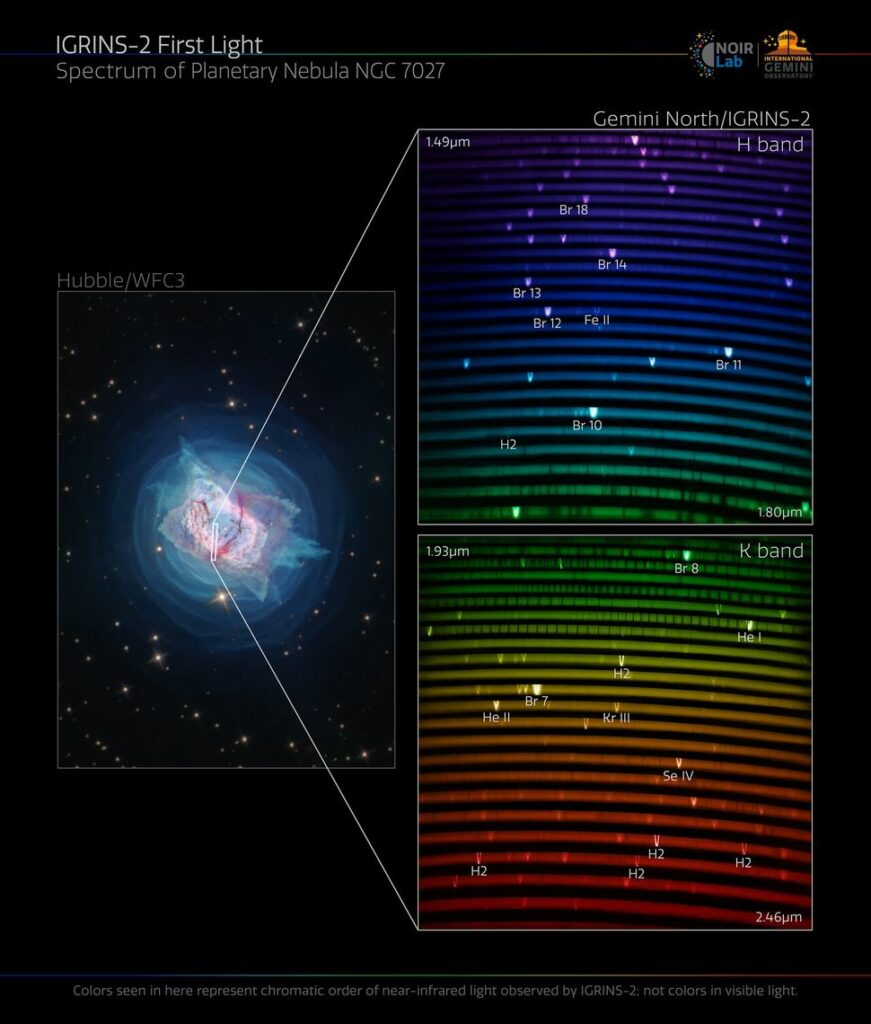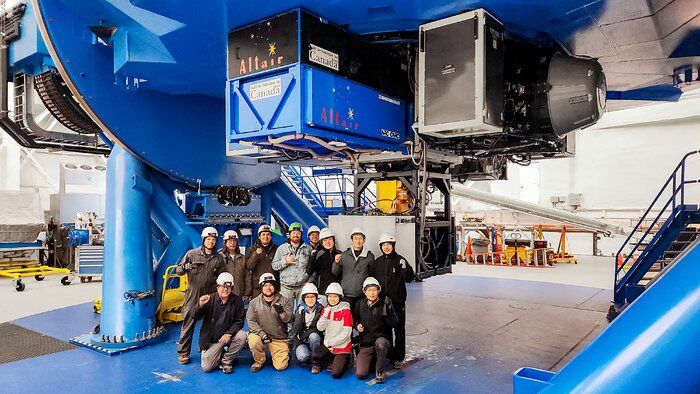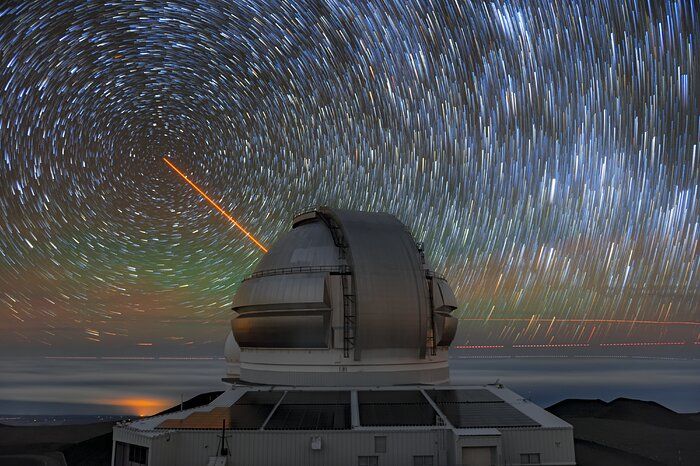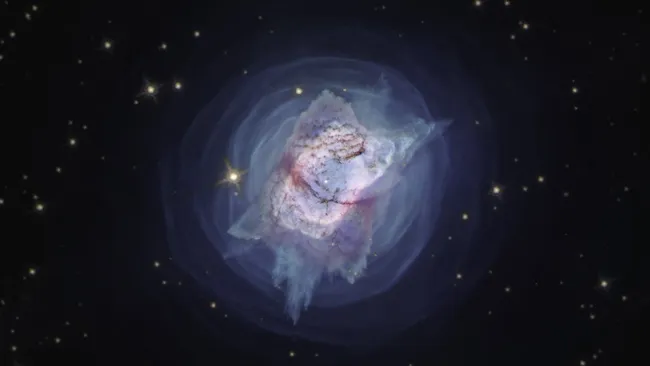Astronomers Penetrate Cosmic Dust in ‘Jewel Bug Nebula’ to Explore the Anatomy of a Dying Star
A brand new spectrograph on the Gemini North telescope has seen first light, detecting elements in a dying star known as the Jewel Bug Nebula.
The Gemini North Telescope on Mauna Kea in Hawaii has recently unveiled the first spectrum captured by a state-of-the-art spectrograph. This advanced instrument allows astronomers to delve into the depths of cosmic dust that permeates our universe.
The spectrum reveals intricate details of a vast cloud of gas and dust that was expelled by a star similar to our sun during its final stages of life. This cloud, known as a planetary nebula, is scientifically referred to as NGC 7027 or the Jewel Bug Nebula. It resides approximately 3,000 light years away from us in the constellation of Cygnus, also known as the Swan.
The remarkable spectrograph responsible for capturing the light emitted by the Jewel Bug Nebula is called IGRINS-2, an abbreviation for Immersion Grating Infrared Spectrograph-2. Operating at near-infrared wavelengths of light, which are invisible to the human eye, this high-resolution instrument precisely observes wavelengths ranging from 1.45 to 2.45 microns. Unlike visible light, cosmic dust obstructs visibility, but near-infrared light has the ability to penetrate through this dust and unveil hidden secrets. This is why the James Webb Space Telescope, renowned for its capability to peer through deep space dust curtains, is also equipped with powerful near-infrared wavelength detection technology.
Regarding the “immersion grating” aspect, it pertains to a type of diffraction grating which employs transparent and reflective materials to separate light into its constituent wavelengths. This is precisely how IGRINS-2 effectively accomplished the task of capturing the vivid and intricate spectrum of infrared wavelengths.

IGRINS-2, an upgraded version of the original IGRINS spectrograph, was developed in 2014 by scientists from the Korea Astronomy and Space Science Institute (KASI) and the University of Texas. Initially, IGRINS 1.0 had been utilized as a “visiting instrument” on various telescopes, including the 2.7-meter Harlan J. Smith Telescope at McDonald Observatory in Texas and the 4.3-meter Discovery Channel Telescope at Lowell Observatory in Arizona. However, since 2020, IGRINS has found a permanent home on the 8.1-meter Gemini South Telescope in Chile. Now, the counterpart of NOIRLab’s International Gemini Observatory, Gemini North, is set to receive the IGRINS-2 on a permanent basis.

The Jewel Bug Nebula’s first-light spectrum has been reconstructed by scientists and technicians at KASI once again. However, this is just the beginning of its capabilities. After integrating the instrument into Gemini North’s sub-systems and ensuring compatibility with the telescope’s software, IGRINS-2 will primarily focus on studying areas of star formation and star death, such as NGC 7027, as well as exoplanets, cool brown dwarfs that emit mainly in the infrared, and distant galaxies enveloped in dust during their turbulent evolutionary stages.
According to Martin Still, the National Science Foundation’s Program Director for the International Gemini Observatory, the ability of IGRINS-2 to penetrate through otherwise opaque regions of the universe will provide valuable insights into the birth of stars and various other astronomical phenomena concealed by galactic dust.

In NGC 7027, IGRINS-2 has already detected elements like isotopes of bromine, helium, iron, krypton, and selenium, along with abundant molecular hydrogen. With the exceptional light-gathering capacity of Gemini North’s 8.1-meter mirror, we can anticipate that IGRINS-2 will make even more intricate observations and unveil numerous significant discoveries in the future.
This article is republished from space.com under a Creative Commons license. Read the original article.
Do not forget to share your opinion with us to provide you with the best posts !




0 Comments